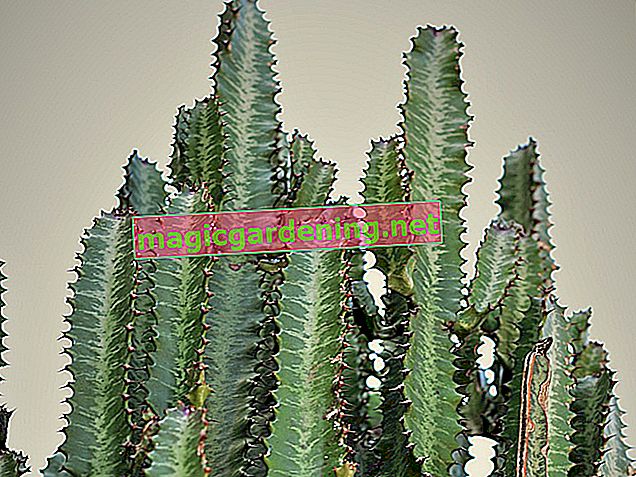
Combine pruning and propagation in a targeted manner
The triangular milkweed is a type of plant for which regular pruning is not absolutely necessary for healthy plant growth. Nevertheless, cutting off certain parts of the plant can be useful in order to effectively limit the height growth of a Euphorbia trigona. Under certain circumstances, the cut can also ensure stronger branching of the otherwise often tightly columnar growing plant. Before making any incision, however, you should be aware that the cuts on a Euphorbia trigona remain visible like scars and that they are deliberately applied accordingly. In addition, the cut material can be used wonderfully uncomplicated for the usual propagation through head cuttings.
also read
- Cut the triangular milkweed correctly
- The triangular milkweed - these are the most important pieces of advice for optimal care
- Euphorbia tirucalli successfully propagate yourself
Tips on how to proceed when cutting the cuttings
The following things are important and must be observed when cutting the cuttings:
- Gloves protect against the toxic milky sap of the euphorbias
- use a cutting tool that is as sharp and clean as possible
- Let the cuttings dry before inserting them into the substrate
While with many other plant species a very quick introduction of the cuttings into the plant substrate intended for the rooting phase is advisable, freshly cut cuttings of Euphorbia trigona should first be allowed to dry in a rather shady and evenly tempered place for a few days. If this is not observed, rot can quickly develop at the interfaces of the cuttings. In addition, the substrate should also be as dry as possible and sandy rather than loamy when propagating this type of plant.
Better dry than too wet
Basically, head cuttings of the Euphorbia trigona root relatively quickly and easily under suitable conditions. However, the planters with the cuttings should be kept relatively dry for the first few weeks and not watered too often. The triangular milkweed is also suitable for the cuttings propagation for the warm and rather dry window sill, where other plant species could only be rooted successfully to a limited extent.
Tips
As a substrate for growing the cuttings, you can either use ready-made cactus or succulent soil from specialist retailers, or mix loose soil with sand and gravel.








